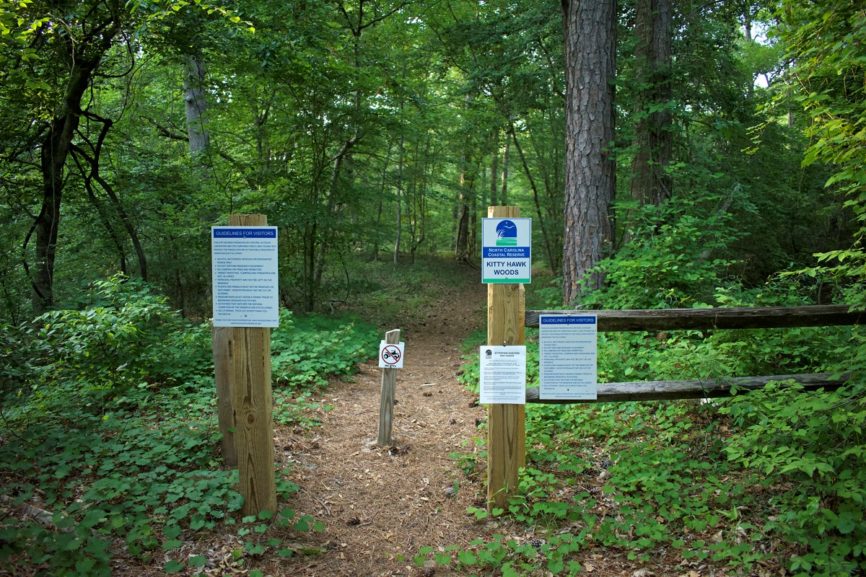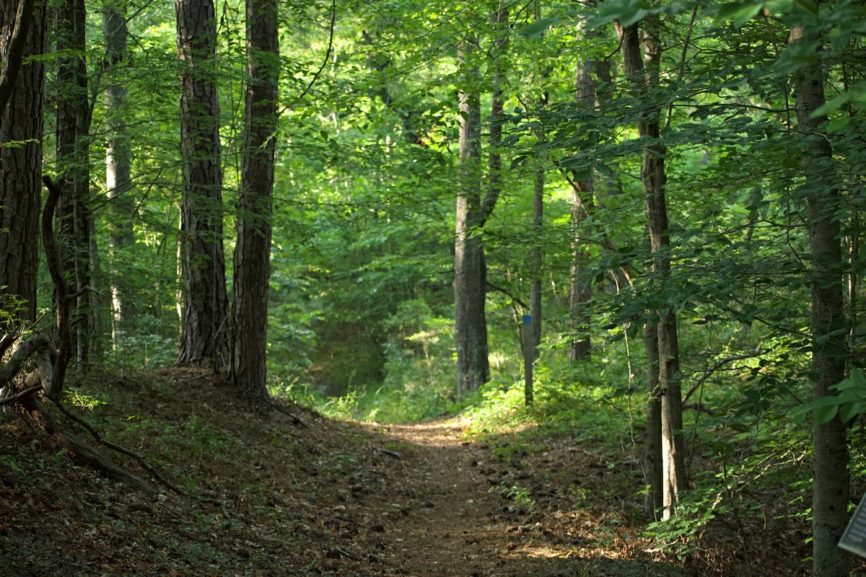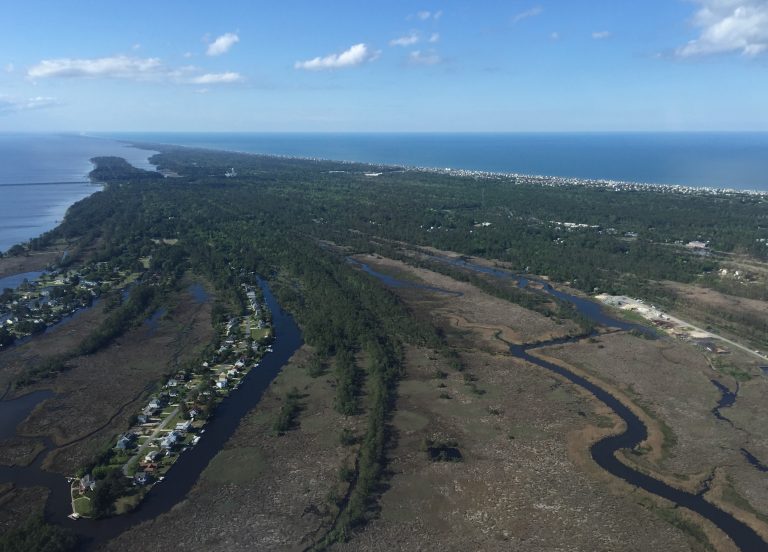Kitty Hawk Woods Coastal Reserve is a place of remarkable beauty and diversity. There are four protected maritime forests on the Outer Banks, with Kitty Hawk Woods Coastal Reserve being one of them. On the OBX the protected maritime forests you will find are Currituck Banks Estuarine Reserve, Nags Head Woods, Buxton Woods, and of course, Kitty Hawk Woods Coastal Reserve.
The Kitty Hawk Woods Coastal Reserve boasts 1,890 acres of natural beauty for visitors and locals to explore. A trip through the Kitty Hawk Woods Coastal Reserve will present you with the opportunity to spot local creatures and critters as well as native plants and interesting geographical features unique to the area, this Reserve is truly a natural gem on the OBX!
There are a number of ways to see what Kitty Hawk Woods Coastal Reserve has to offer. Hop in a kayak and paddle along Jean Guite Creek or walk or bike on the multi-use paths along the edge of the Reserve and the trails throughout it.
There are three trailheads to access the Kitty Hawk Woods Coastal Reserve, they are all located in Kitty Hawk. One is at the end of Birch Lane on the east side of the Kitty Hawk Woods Coastal Reserve. There is the Barlowe Trailhead at the intersection of Amadas Lane and Colleton Avenue. And the Ridge Road Trailhead at the end of Ridge Road.

To keep it simple, we’ll go with the Ridge Road Trailhead. The Ridge Road Trail is a loop trail and it does connect with the Barlow Trail as well as a trail that leads to Albemarle Sound.
Ridge Road is off Tillett Street. Go to the end of Tillett and turn right at the Austin Cemetery. Go to the end of Ridge and that cleared dirt leading up to a wooden barrier with a playground on the left is the entrance to Kitty Hawk Woods Coastal Reserve.
After about a half-mile there’ll be an intersection with a bench to take a short rest if desired. The trail to the left leads to Albemarle Sound. (This particular trail is not a good trail for bikes.) Continuing straight, the path leads out to the Barlowe Trailhead and the dirt roads of Amadas Lane and Colleton Avenue.
There are a couple of ways that this trail can loop back around and the path itself is a pretty straight shot so there’s not much chance of getting lost.

Bike riders will notice right away that there is a sort of rhythmic thump, thump, thump. Hikers will certainly notice that the path is flat, compact and seems to be raised above the surrounding terrain.
At one time, from about 1910 to 1920 there was a logging operation in Kitty Hawk Woods by the Tunis Lumber Company of Elizabeth City. To move the felled trees to Albemarle Sound where they were rafted together for their journey to Elizabeth City mills, a train track was built and then loaded onto rail cars.
The trail is the remnants of that time.
In spite of the logging operations, or perhaps because they occurred 100 years ago, Kitty Hawk Woods Coastal Reserve exhibits many of the characteristics of a healthy maritime forest. The trails offer a fantastic window into that world.

The Albemarle Sound Trail parallels a deep swale that has become a swamp. In the summer, frogs are everywhere; dragonflies flit endlessly among the grasses at the water’s edge. Bald cypress, an evergreen that is water tolerant, towers above the trail.
As the trail climbs from the swale, the vegetation changes.
Hardwood trees dominate–American beech, loblolly pine, hickory, and some very large holly trees. It’s possible—probable really—that at one time there was live oak in the forest. However, historical records from the 1850s seem to indicate they were all harvested for shipbuilding.

There has never really been anyone living in Kitty Hawk Woods Coastal Reserve. It is beautiful but as a 1932 Coast and Geodetic Survey map team described the area it is “…impassable swamps and sand dunes.”
Yet as a place to explore that seems a world away from the beach, Kitty Hawk Woods Coastal Reserve is remarkable.





